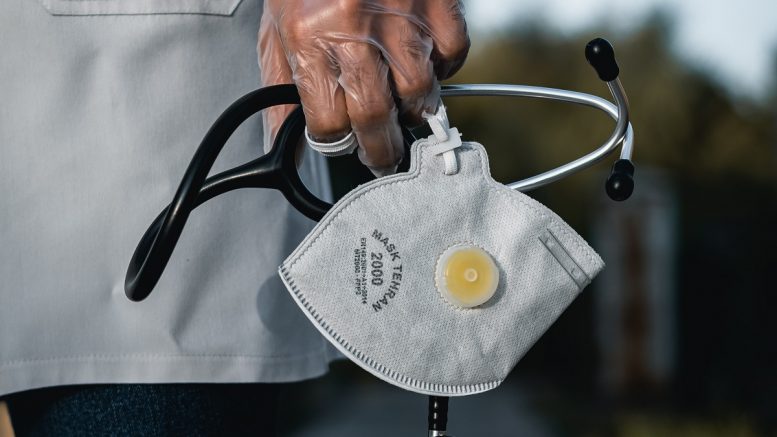As people start returning to some level of normalcy, hospitals and health systems are shifting their sights to how to deliver care after Covid, which means incorporating insights learned from the past year. The rapid shift to telemedicine consults allowed patients and providers to learn how to access and deliver care remotely. Although not ideal for all situations, remote consults helped hospitals and health systems learn how to start incorporating remote care workflows.
As the end of the public health emergency nears, more patients are now able to see their doctors and care teams in person, data suggests that a new normal will need to include virtual care delivery models as hospitals start planning for the future.
Patients like the ease and safety of virtual medical appointments, though some do miss the “human touch” and ease of sharing information with doctors. According to a report by Deloitte, 82% of patients were satisfied with the experience of virtual medical appointments and 62% of patients say they are likely to continue attending medical appointments virtually once the COVID-19 pandemic ends.
However, some of the top challenges hospitals and health systems will face include:
- Competition for consumer-centric health companies offering virtual first care models.
- Expanding from telehealth to hybrid “click and mortar” virtual care models.
- Incorporating community based care (RPM, hospital at home, etc).
Hospital and health system leaders will need to reframe their approach to meeting people’s expectations for how care should be accessed. Covid provided an opportunity for consumers to experience what convenient access to care looks like outside of traditional healthcare settings. Companies like Ro, and Thirty Madison are expanding into consumer centric primary care delivery. It will be important to move beyond just scheduled visits, and think about how to redesign care delivery models such that it is easy for patients to request and providers to deliver that care.
We will begin to see a shift beyond telehealth only and towards a hybrid delivery model. Incorporating both virtual and in-person services will be necessary to efficiently utilize existing provider resources within organizations. Rather than virtual only or in-person only, having the ability to seamlessly shift care from online to in-person or vice versa will be key to driving more complex workflows than just scheduled telemedicine appointments. The shift to “click and mortar” delivery is vital to managing various serviceliness that adopted telemedicine during the pandemic. Maintaining and expanding on these workflows will be essential for hospitals.
Incorporating community based care programs into value based care models will be key to expanding upon remote patient monitoring (RPM), chronic care management, and adding hospital at home services. Expanding RPM beyond covid treatment to other chronic conditions and other specialties will allow patients to be discharged home instead of to acute care facilities. By enabling efficient follow up and monitoring of patients remotely, hospitals will enable more access to patients that need to be seen in person. Hospital at home and ET3 programs are also going to drive the need for having efficient and adaptable workflows that blend seamlessly with how care teams operate today.
Transitioning to care after covid has highlighted the need to successfully incorporate what was learned and build a strategy around expanding virtual care for hospitals and health systems. Fortunately successful programs are already emerging and are using tools to drive efficient use of hybrid care delivery models, simplifying workflows, and incorporating technology solutions that will allow for adapting to needs in the future. MedStar health has successfully implemented a hybrid care model that enables an in-person provider-in-triage (PIT) program.
This program reduced “door-to-doctor time,” the number of patients leaving the ED without being seen, and the wait time for medications. Similarly, remote care can also be supplemented with in-person care as needed. The key to successful RPM, as well as consumer driven on-demand access to care is the ability to capture and route care requests efficiently. Improving workflows helped New York City Health and Hospitals Corporation (NYC-HHC) improve access to remote care for patients while seamlessly embedded into their providers workflows. Integrated hand-offs along with access to ASL and medical interpreters within video visits has helped deliver care while addressing potential care disparities.
Successful examples of telehealth programs can be attributed to implementation and use of highly scalable, API platforms. This enables IT and care teams to rapidly identify and deploy new care models with minimum disruption to their clinical teams. This can lead to quick adoption and increased utilization of the new services. Using APIs can enable health systems to model scalable workflows for their care teams while simplifying access to care for patients.
While it may seem overwhelming, modifying your organization’s digital strategy to address the above challenges will be key. Focusing on the shifting needs of people who need access to care along with those capable of delivering that care will help guide the path forward. Selecting platforms that are able to consolidate siloed solutions into a unified experience while maintaining future adaptability will position healthcare organizations to efficiently provide care after covid.
By Sandeep Pulim, MD Chief Medical Officer, Bluestream Health





